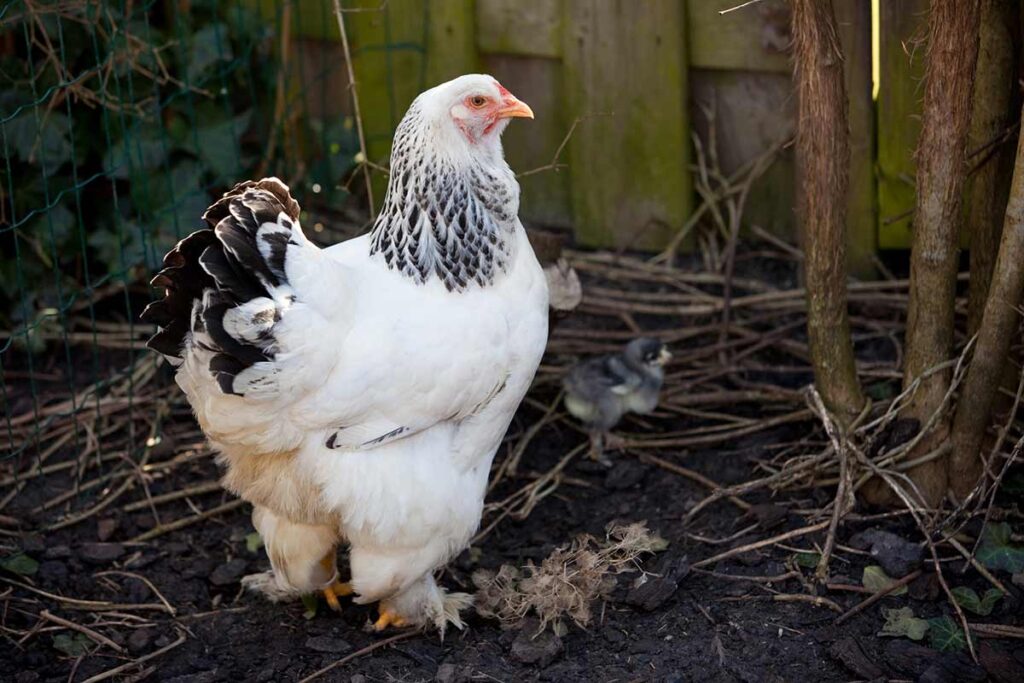How Much Do Chickens Weigh? Exploring the Average Weights of Different Breeds
Chickens come in a wide variety of shapes, sizes, and weights, depending on their breed. Understanding the average weight of different chicken breeds is essential for proper housing, feeding, and overall care. In this comprehensive article, we will delve into the typical weights of various chicken breeds, factors that influence their size, and the importance of maintaining a healthy weight.
Factors Affecting Chicken Weight
Several factors contribute to the weight of a chicken, including:
- Breed: Different chicken breeds have distinct genetic makeups that determine their size and weight potential.
- Age: Chickens gain weight as they mature, with most reaching their full size around 18-24 weeks of age.
- Sex: Male chickens, known as roosters, tend to be larger than females, called hens.
- Nutrition: A balanced diet rich in protein, carbohydrates, and essential vitamins and minerals supports healthy growth and weight gain.
- Health: Illness, stress, and parasites can negatively impact a chicken’s weight and overall well-being.
Average Weights of Common Chicken Breeds
To provide a comprehensive overview, we have compiled a table outlining the average weights of some of the most popular chicken breeds:
| Breed Name | Hen Weight | Rooster Weight |
|---|---|---|
| Cochin | 8.5 lbs | 11 lbs |
| Brahma | 8 lbs | 10 lbs |
| Orpington | 8 lbs | 10 lbs |
| Australorp | 8 lbs | 10 lbs |
| Plymouth Rock | 7.5 lbs | 8.5 lbs |
| Rhode Island Red | 6.5 lbs | 8.5 lbs |
| Wyandotte | 6 lbs | 9 lbs |
| ISA Brown | 5 lbs | 6 lbs |
| Polish | 4.5 lbs | 6 lbs |
| Silkie | 1.5 lbs | 2.5 lbs |
| Japanese | 1.1 lbs | 1.3 lbs |
It’s important to note that these weights are approximate and may vary depending on individual birds and specific bloodlines within each breed.
Broiler Chickens and Weight Gain
Broiler chickens, raised specifically for meat production, have been selectively bred to gain weight rapidly. In the 1950s, the average weight of a broiler chicken at slaughter was around 3 lbs. Today, broilers can reach 5-7 lbs in just 6-8 weeks, thanks to advancements in genetics and nutrition.However, this rapid growth can lead to health issues, such as leg problems, heart and respiratory disorders, and even sudden death. Responsible breeders and farmers aim to balance growth rate with overall health and well-being.
Bantam Chickens and Miniature Breeds
At the other end of the spectrum are bantam and miniature chicken breeds. These diminutive birds typically weigh less than 4 lbs, with some as small as 1-2 lbs. Bantams are popular for their cute appearance, docile nature, and ability to thrive in small spaces.While bantams make great pets and egg producers, their small size means they may be more vulnerable to predators and require extra care to ensure their nutritional needs are met.
Maintaining a Healthy Weight
Regardless of breed, it’s essential to maintain your chickens at a healthy weight. Overweight chickens are prone to health issues, while underweight birds may struggle to stay warm, produce eggs, and fight off illness.Signs of an unhealthy weight include:
- Overweight: Difficulty walking, excessive fat deposits, labored breathing
- Underweight: Prominent keel bone, visible ribs, lethargy
To keep your chickens at their optimal weight, provide a balanced diet, ensure access to clean water, and offer a varied diet of layer feed, grains, and fresh greens. Regular monitoring and adjustments to their diet and environment can help maintain a healthy weight throughout their lives.
Conclusion
Chickens come in a wide range of weights, from the diminutive bantams to the hefty broilers and heritage breeds. Understanding the average weights of different chicken breeds is crucial for providing proper care, housing, and nutrition. By monitoring your chickens’ weights and maintaining a healthy body condition, you can ensure their overall well-being and enjoy the benefits of keeping these fascinating feathered friends.
FAQ Section
Q1: What is the average weight of a chicken?
A1: The average weight of a chicken varies depending on the breed, sex, and age. Hens typically weigh between 4-8 lbs, while roosters can range from 6-11 lbs.
Q2: How much do broiler chickens weigh?
A2: Broiler chickens, raised for meat production, can reach 5-7 lbs in just 6-8 weeks due to selective breeding and advancements in nutrition.
Q3: What is the average weight of a bantam chicken?
A3: Bantam and miniature chicken breeds typically weigh less than 4 lbs, with some as small as 1-2 lbs.
Q4: How can I tell if my chicken is at a healthy weight?
A4: Signs of a healthy weight include a well-rounded body, no visible ribs or keel bone, and ease of movement. Overweight chickens may have difficulty walking, while underweight birds will appear thin and lethargic.
Q5: What factors influence a chicken’s weight?
A5: Factors that influence a chicken’s weight include breed, age, sex, nutrition, and overall health.
For more information on chicken breeds and their characteristics, you can refer to the Wikipedia page on Chicken Breeds.By understanding the average weights of different chicken breeds and maintaining a healthy weight through proper care and nutrition, you can ensure your feathered friends thrive and enjoy a high quality of life.



